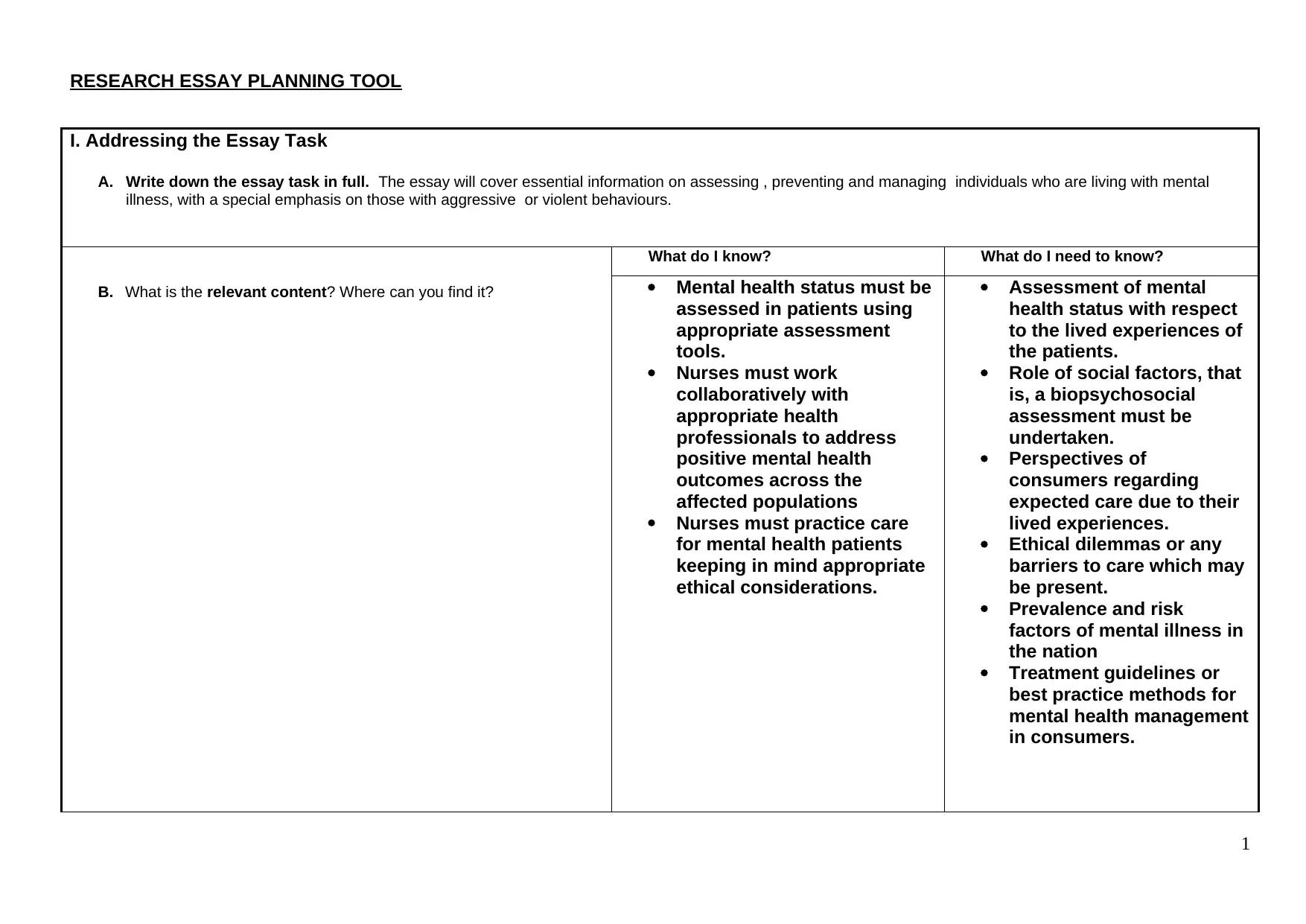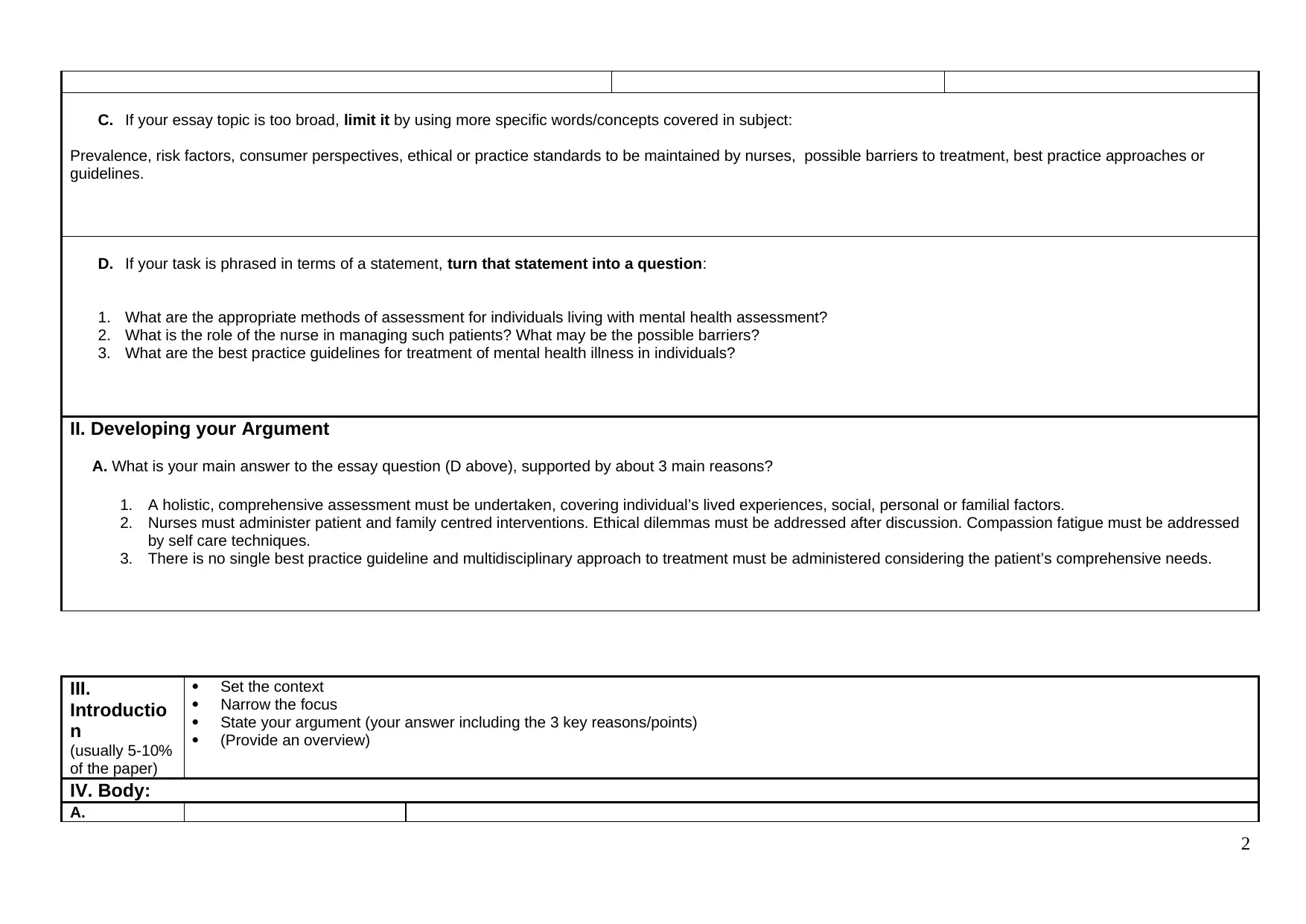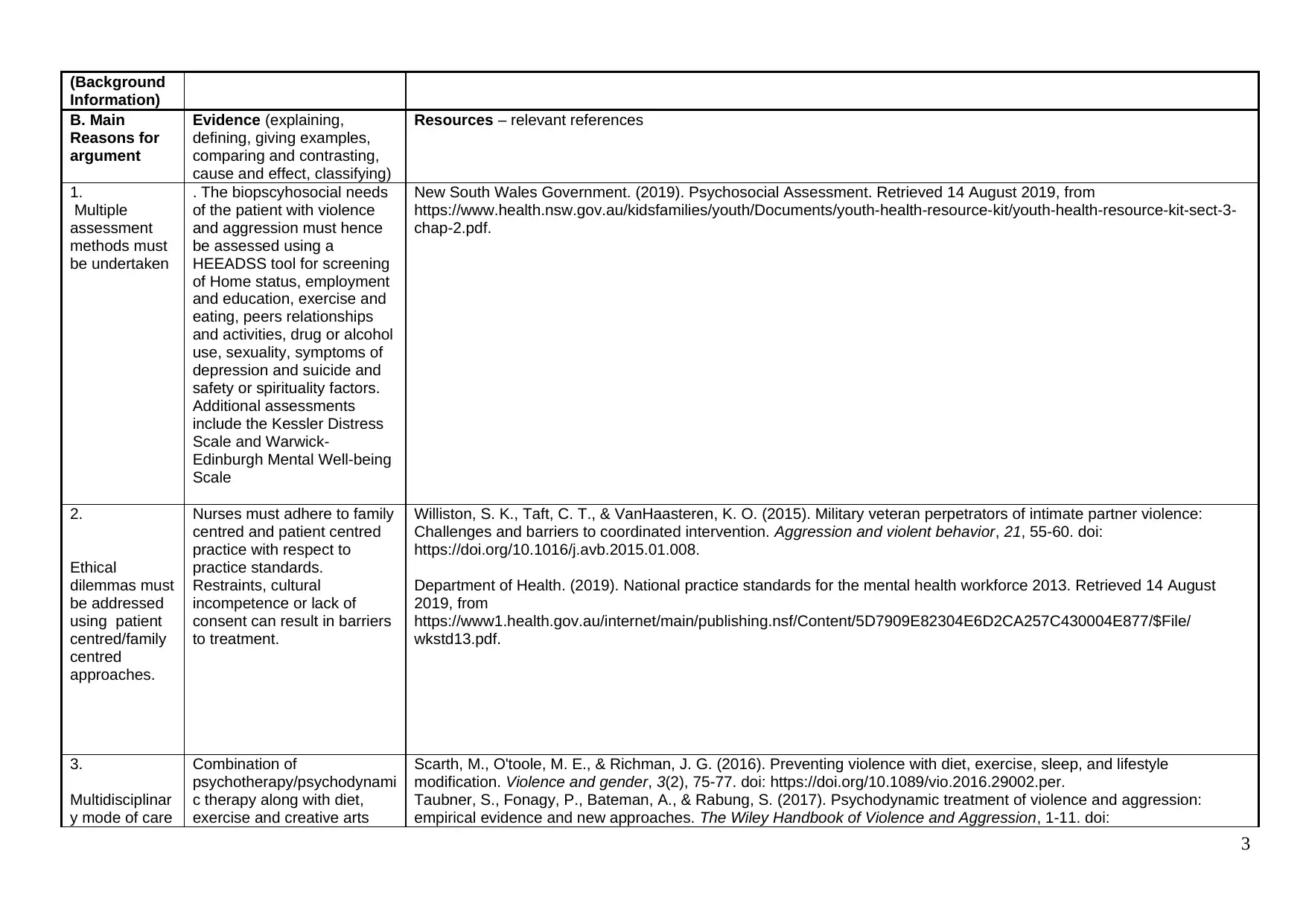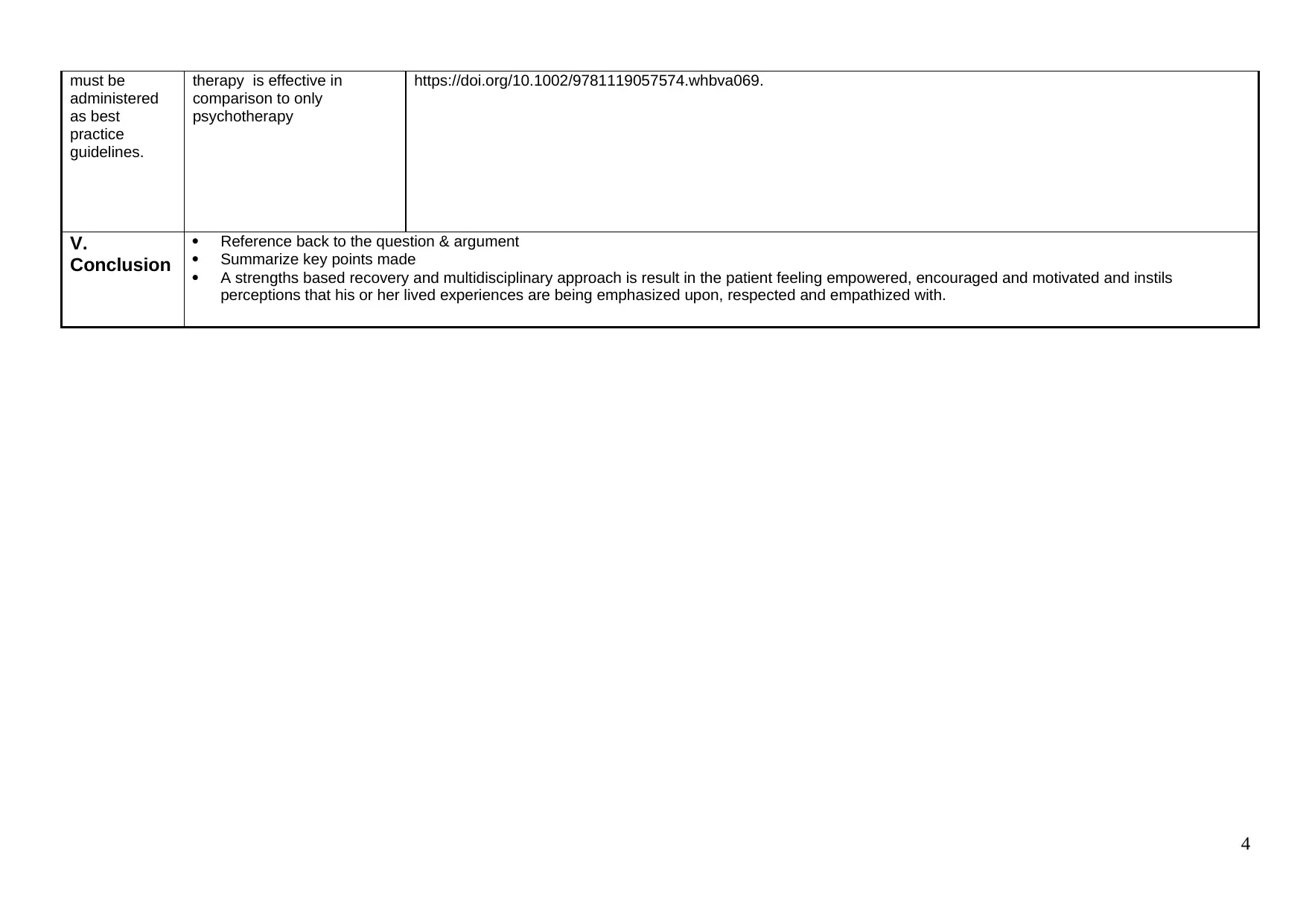Essay Planning Tool: Assessing, Preventing, Managing Mental Illness
VerifiedAdded on 2022/10/02
|4
|887
|149
Homework Assignment
AI Summary
This document presents a detailed research essay planning tool designed to guide students in addressing the complexities of mental illness, particularly concerning individuals exhibiting aggressive or violent behaviors. The tool emphasizes the importance of a holistic, comprehensive assessment that incorporates the individual's lived experiences, social factors, and personal or familial influences. It highlights the role of nurses in administering patient and family-centered interventions while addressing ethical dilemmas and the need for self-care to combat compassion fatigue. The planning tool underscores the absence of a single best practice guideline and advocates for a multidisciplinary approach to treatment, tailored to the patient's comprehensive needs. The essay structure includes an introduction to set the context, followed by the main arguments supported by evidence such as assessment methods (HEEADSS tool, Kessler Distress Scale), addressing ethical dilemmas, and the importance of multidisciplinary care as best practice guidelines. The conclusion stresses a strengths-based recovery approach, encouraging empowerment and motivation, and emphasizing the patient's lived experiences.
1 out of 4











![[object Object]](/_next/static/media/star-bottom.7253800d.svg)